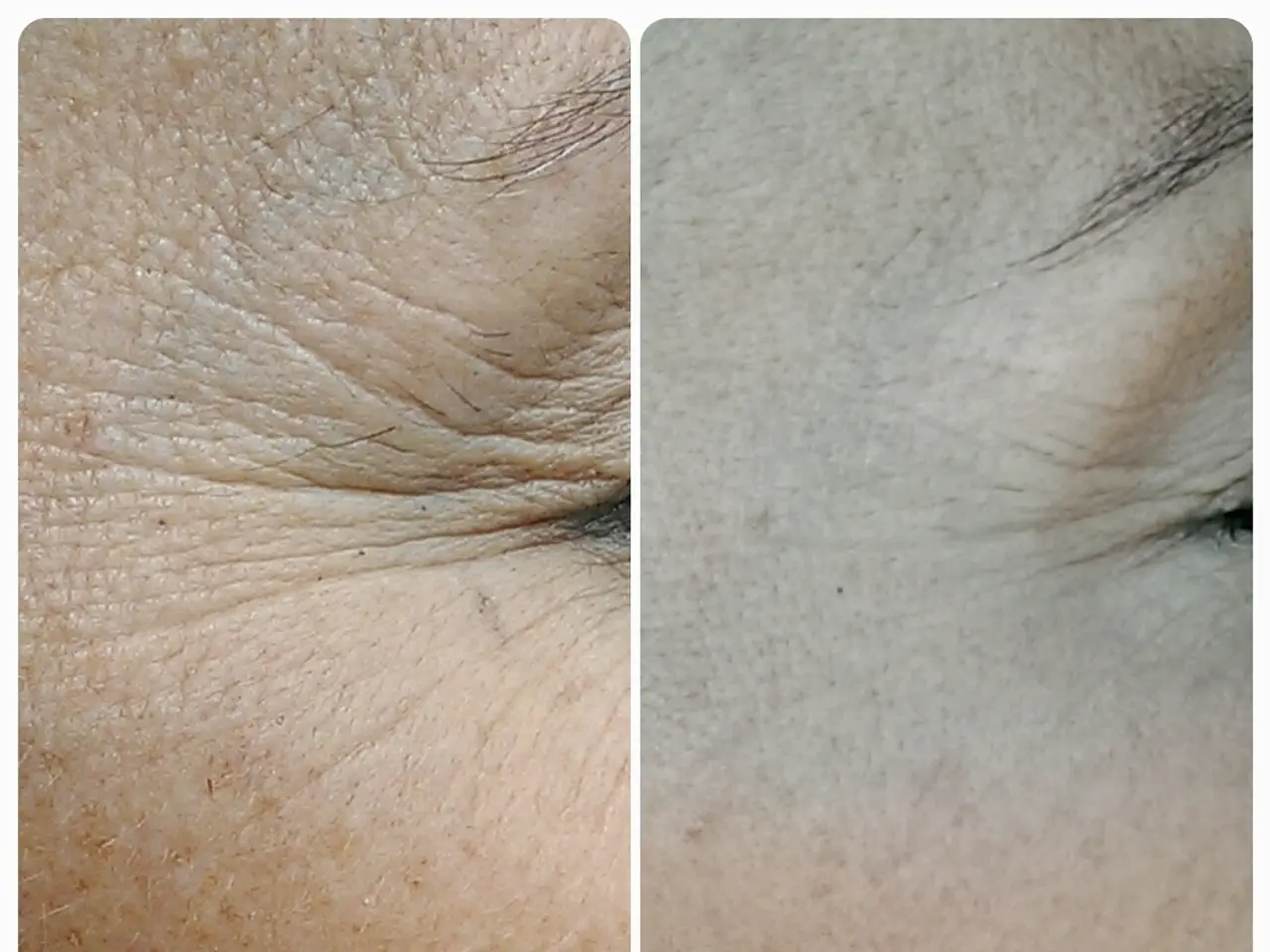Skincare Urea: Applications, Advantages, Drawbacks, and Further Insights
Urea, a naturally occurring organic compound found in healthy skin, has been gaining attention in the skincare world for its numerous benefits. This versatile ingredient can enhance the effectiveness of various skincare products, including antifungal treatments, due to its function as a penetration enhancer.
One popular product that harnesses the power of urea is Eucerin UreaRepair Plus, designed to treat dry skin on the feet. By penetrating thick layers, it provides much-needed moisture and comfort.
However, it's essential to note that while urea offers numerous advantages, some individuals may experience mild, temporary side effects such as stinging, itching, irritation, or burning.
Hydration and More: The Gradient of Urea Concentrations
Urea acts as a humectant, drawing water into the skin to help it stay smooth and moisturized. Recommended urea concentrations in skincare products vary depending on their intended use and skin needs.
- 5-10% urea concentrations are common in daily moisturizers and gentle hydrating products, suitable for everyday use and sensitive skin. At this range, urea mainly acts as a humectant to hydrate and soften skin without strong exfoliation.
- 10-20% urea is effective for very dry, rough, or flaky skin, providing both hydration and mild exfoliation. Products in this range, such as clinical moisturizers, are often recommended for conditions like eczema and psoriasis and can restore skin softness and barrier function.
- 20-40% urea concentrations are typically reserved for more intensive treatments targeting severe dryness, hyperkeratosis, or calloused skin. These products provide stronger exfoliation and are more potent, requiring cautious application and often limited to body use rather than face.
Associated benefits by concentration include:
- Hydration and water retention (at low to moderate levels, 5-10%).
- Mild exfoliation by softening keratin (10-20%), helping improve skin texture and reduce roughness.
- Emollient effects to restore and maintain the skin barrier, which benefits eczema, psoriasis, and dry skin conditions.
- Potential improvements in dermal density and elasticity, which can reduce fine lines and wrinkles.
- Reduction of hyperpigmentation through promoting skin renewal.
For facial use, products typically contain lower urea percentages (around 5-10%) because facial skin is more sensitive, while higher concentrations (above 20%) are usually reserved for tougher body skin areas like feet or elbows.
Urea-containing formulations often combine moisturizing and soothing ingredients (like ceramides, hyaluronic acid, and panthenol) to enhance benefits and reduce potential irritation, especially at higher concentrations.
Beyond Skin: The Role of Urea in Nail Care and More
Urea's benefits extend beyond skincare, as it can help improve and treat nail conditions, including fungal infections. It can also help improve signs of UV radiation exposure on the skin.
However, there are some precautions to consider. Scientists have not fully studied the use of urea in pregnant people, and it is recommended to avoid urea during pregnancy. People should also avoid using urea around sensitive areas such as the eyes and lips, as it may cause irritation. People who are nursing should also avoid products that contain urea.
Anyone interested in learning more about how urea may support their skin health or any risks should speak with a dermatologist or other medical professional.
Urea is used in various skin care products such as creams, gels, lotions, shampoos, hair care products, and certain types of makeup. Products with 40% urea content are proteolytic, meaning they will break down proteins.
In conclusion, the gradient of urea concentrations and associated benefits allows tailoring urea products to various skin types and conditions effectively. Whether you're dealing with dryness, roughness, or more, there's a urea-based product that can help. Always remember to consult with a healthcare professional before introducing new products into your skincare routine.
- Urea, a skincare ingredient found naturally in healthy skin, has a function as a humectant, drawing water into the skin to help it stay smooth and moisturized.
- Recommended urea concentrations in skincare products vary depending on their intended use and skin needs, and they can range from 5-10% in daily moisturizers to 20-40% in more intensive treatments.
- In addition to skincare, urea can also help improve and treat nail conditions, including fungal infections, and signs of UV radiation exposure on the skin.
- However, it's essential to note that while urea offers numerous advantages, some individuals may experience mild, temporary side effects, and pregnant people, nursing mothers, and individuals with sensitive areas (such as eyes and lips) should avoid using urea.




